Wholesale Distribution and the Auto Parts Supply Chain
Built For

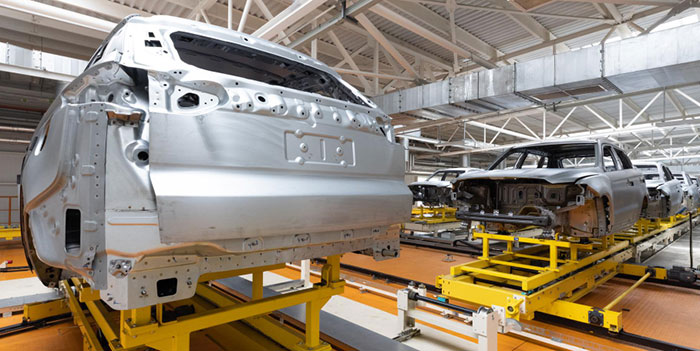
The auto parts industry operates within a diverse ecosystem with various key players, each contributing unique skills and functions to ensure the seamless flow of auto parts from production to consumption. Wholesale distribution is a vital link within the auto parts supply chain, playing a crucial role in connecting auto parts manufacturers with retailers, service centers, and end consumers. This article delves into the intricacies of wholesale distribution within the auto parts supply chain, exploring the types of auto parts, the challenges faced, their impacts, and the software-driven solutions that are reshaping the distribution landscape.
Understanding the auto parts supply chain
The collaborative network of manufacturers, suppliers, distributors, wholesalers, retailers, and service centers ensures that vehicles remain operational, safe, and efficient, underscoring the industry’s significance in modern transportation.
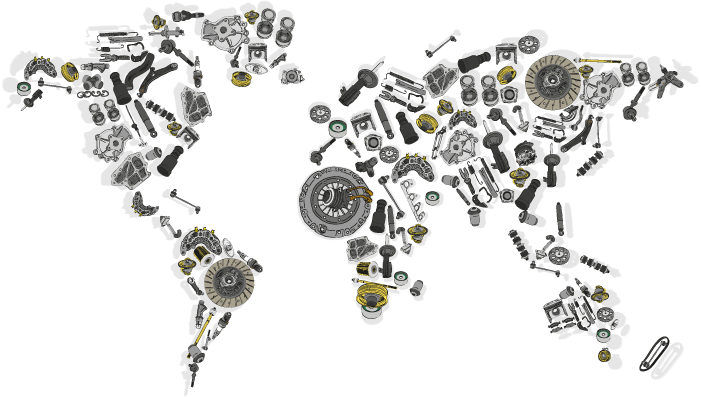
Manufacturers

Manufacturers are the backbone of the auto parts industry. Manufacturers design, engineer, and produce a variety of auto parts, components, and systems. Auto parts manufacturers must create high-quality products that meet industry standards and specifications, but their role extends beyond production; they also conduct research and development to innovate and improve auto parts’ performance, safety, and efficiency.
Suppliers
Auto parts suppliers play a critical role in the auto parts supply chain by managing the procurement and delivery of raw materials needed for manufacturing auto parts. These materials can range from metals and plastics to specialized components and electronics. Suppliers establish relationships with manufacturers to ensure a steady supply of quality materials while adhering to cost, quality, and delivery requirements. Suppliers’ efficiency in sourcing, logistics, and maintaining material quality directly influences the manufacturing process’s success.
Distributors
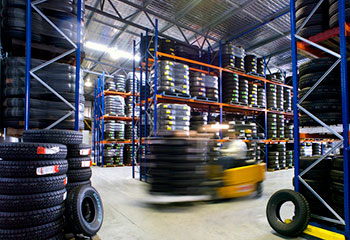
Distributors serve as the bridge between manufacturers and wholesalers in the auto parts supply chain. Their primary function is aggregating auto parts from various manufacturers and supplying them to wholesalers or retailers. Distributors manage inventory, warehouse facilities, and logistics to ensure that auto parts are readily available for timely distribution. They play a crucial role in managing the flow of products, maintaining a diverse inventory, and optimizing the allocation of parts to different markets and regions.
Wholesalers
Wholesalers are key intermediaries that acquire auto parts from distributors and supply them to retailers, service centers, and other bulk buyers. They often operate on a larger scale, providing bulk quantities of parts to meet the needs of various market segments. Wholesalers play a vital role in ensuring that retailers consistently supply auto parts to meet consumer demands. They also assist manufacturers and distributors in reaching broader markets by leveraging their established distribution networks.
Retailers
Retailers are the final link in the auto parts supply chain, connecting products directly to end consumers. Auto parts retailers range from brick-and-mortar stores to online platforms, offering a variety of auto parts tailored to the preferences and needs of individual consumers. Retailers provide customers access to a diverse selection of parts, offering expert advice, product knowledge, and convenience. Auto parts retailers’ roles include assisting customers in making informed decisions, providing post-sales support, and ensuring customer satisfaction.
Service centers and repair shops

Service centers and repair shops are critical players closely tied to the auto parts industry, relying on a consistent supply of quality auto parts to perform vehicle repairs, maintenance, and upgrades. Service centers and repair shops often source their parts from wholesalers or retailers and play a pivotal role in keeping vehicles on the road and in optimal condition.
Exploring auto part types: OEM, aftermarket, and used components
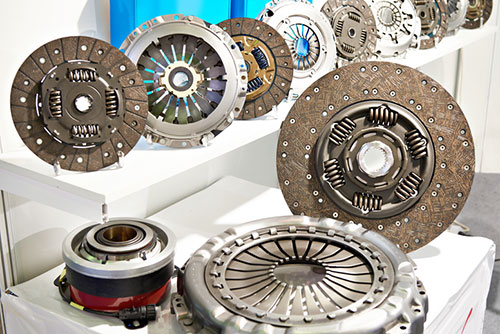
Auto parts can be categorized into three main groups: Original Equipment Manufacturer (OEM) parts, aftermarket parts, and used parts.
Original equipment manufacturer (OEM) parts
Original Equipment Manufacturer (OEM) parts are auto components produced by the same company that manufactured the vehicle. These parts are designed and engineered to match the specifications and quality standards the vehicle manufacturer sets. OEM parts are often considered the highest quality, as they are designed to fit seamlessly into the vehicle’s systems and maintain its original performance and appearance.
Advantages of OEM parts:
- Quality assurance: OEM parts are manufactured to precise specifications, ensuring they meet strict quality standards.
- Perfect fit: These parts are designed to fit exactly as the original components, contributing to the vehicle’s safety and performance.
- Warranty coverage: Many OEM parts come with a warranty from the vehicle manufacturer, providing added peace of mind.
Disadvantages of OEM parts:
- Higher cost: OEM parts are generally more expensive than aftermarket or used parts.
- Limited availability: Depending on the manufacturer, some OEM parts may only be available through authorized dealers.
Aftermarket parts
Aftermarket parts are auto components produced by independent manufacturers not affiliated with the vehicle’s original manufacturer. These parts are designed to replicate or improve upon OEM specifications. Aftermarket parts can vary widely in quality, features, and price, as there is a broad range of manufacturers in the aftermarket industry.
Advantages of aftermarket parts:
- Affordability: Aftermarket parts are often more cost-effective than OEM parts, making them an option for budget-conscious consumers.
- Variety: The aftermarket industry offers a wide range of options, allowing consumers to choose parts that suit their preferences and needs.
- Innovation: Some aftermarket parts offer improved features or performance enhancements unavailable in OEM parts.
Disadvantages of Aftermarket Parts:
- Quality variability: The quality of aftermarket parts can vary significantly depending on the manufacturer.
- Fit and compatibility: While many aftermarket parts are designed to be compatible, there may be imperfect fit or compatibility issues.
Used and refurbished parts
Used and refurbished auto parts, also known as recycled or salvaged parts, encompass components previously installed in vehicles. These parts are removed for various reasons, such as accidents, vehicle upgrades, or replacements. While used parts refer to components that are still functional and can be reinstalled without significant modifications, refurbished parts undergo a process of restoration and renewal before being offered for sale.
Advantages of used and refurbished parts:
- Cost savings: Used and refurbished parts are generally more affordable than new OEM or aftermarket parts.
- Environmentally friendly: Reusing auto parts reduces the demand for new manufacturing, contributing to sustainability efforts.
- Availability: Used and refurbished parts can be valuable resources for rare or discontinued components.
- Quality improvement: Refurbished parts undergo meticulous inspection, repair, and restoration, often resulting in improved quality compared to their initial used state.
Disadvantages of used and refurbished parts:
- Limited warranty: Used parts may come with limited or no warranty, and their longevity can vary depending on their previous usage. Refurbished parts might offer improved warranty coverage due to the restoration process.
- Condition variation: The condition and history of used parts can be uncertain, leading to potential reliability concerns. Refurbished parts address some of these concerns by undergoing a restoration process.
- Sourcing challenges: Finding the right used or refurbished part that fits the specific make and model can sometimes be challenging.
The auto parts industry offers consumers a variety of options to choose from, each with its advantages and disadvantages. OEM parts provide a premium, factory-fitted option, aftermarket parts offer flexibility and cost savings, and used parts provide an environmentally friendly and budget-conscious alternative. Ultimately, the choice of auto parts depends on budget, vehicle type, intended use, and personal preferences.
Wholesale distribution: Connecting auto parts manufacturers and retailers

Navigating the auto parts supply chain involves strategically orchestrating distribution channels, with wholesale distribution as a pivotal cornerstone. This dynamic channel is paramount in facilitating the seamless movement of auto parts from manufacturers to various touchpoints within the industry. Vital roles in the auto parts ecosystem include:
Wholesale distribution to authorized dealers and independent retailers
One of the primary functions of wholesale distribution is to bridge the gap between manufacturers and authorized dealers or independent retailers. Wholesale distributors serve as intermediaries, aggregating a diverse range of auto parts from various manufacturers and making them available to retail entities, streamlining the process for smaller retailers to access a comprehensive inventory without the burden of directly dealing with multiple manufacturers.
Supplying online retailers and e-commerce platforms
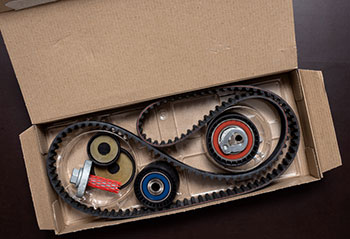
In the era of digital commerce, wholesale distribution extends its reach to online retailers and e-commerce platforms. These platforms rely on a steady supply of auto parts to fulfill customer orders promptly. Wholesale distributors ensure a continuous flow of products to these virtual storefronts, enabling customers to browse and purchase quickly, irrespective of geographical barriers.
Bulk orders for fleet management and service centers
With the responsibility for maintaining and repairing a fleet of vehicles, fleet management companies and service centers require bulk quantities of auto parts. Wholesale distributors offer tailored solutions for these high-volume buyers, ensuring a steady stream of parts to keep operations running smoothly.
Enabling timely restocking for brick-and-mortar stores
Traditional brick-and-mortar stores rely on timely restocking to meet the demands of walk-in customers. Wholesale distributors play a pivotal role in providing these stores with a replenishment mechanism, allowing them to maintain optimal inventory levels. This proactive approach ensures that consumers have immediate access to the required auto parts when they visit physical retail outlets.
With its intricate network and far-reaching impact, wholesale distribution functions as a linchpin in the auto parts supply chain. It bridges the gap between manufacturers and the various market segments, enabling a seamless flow of products that sustains the entire ecosystem. The ability of auto parts wholesale distributors to meet the diverse needs of authorized dealers, retailers, online platforms, service centers, and more highlights the indispensable nature of wholesale distribution in the pursuit of an efficient and effective auto parts supply chain.
Challenges, impacts, and solutions in auto parts supply chain wholesale distribution
Inventory management
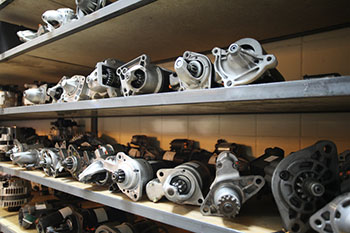
Challenge: Managing a diverse inventory of auto parts with varying characteristics and demand patterns can be challenging.
Impact: Inaccurate inventory levels lead to overstocking, tying up capital in excess parts, or understocking, resulting in missed sales opportunities. This inefficiency strains resources, increases carrying costs, and leads to potential product obsolescence.
Solution: Robust inventory management software provides real-time visibility into inventory levels, demand trends, and order history and enables auto parts wholesalers to optimize stock levels, reduce excess inventory, and automate reorder processes based on demand forecasts.
Manual processes and errors
Challenge: Reliance on manual processes and spreadsheets for order processing, invoicing, and inventory management.
Impact: Manual data entry and processing are prone to human errors, resulting in incorrect orders, duplicate entries, and discrepancies in inventory records. Rectifying these errors demands additional time, resources, and effort, impacting overall productivity and customer satisfaction.
Solution: Implementing automation and digitization through software solutions offers a robust remedy. Automation minimizes human intervention, reducing the chances of errors in data entry, order processing, and invoicing. Software platforms streamline these processes, ensuring accuracy and consistency. Barcode scanning, automated order fulfillment, and electronic invoicing reduce manual handling, enhance order accuracy, and expedite transactions. By embracing automation, wholesalers can mitigate errors, accelerate operations, and allocate resources more efficiently, ultimately improving their operational efficiency and customer service standards.
Demand forecasting accuracy
Challenge: Fluctuating market trends, seasonality, and unforeseen events can make forecasting demand complex.
Impact: Inaccurate demand forecasts can lead to imbalanced inventory levels, affecting order fulfillment and customer satisfaction. Overestimating demand may result in excess stock while underestimating it can lead to stockouts, which impact the overall distribution efficiency.
Solution: Inventory management software’s advanced analytics and demand forecasting tools help auto parts wholesalers predict demand patterns more accurately. These tools analyze historical data, market trends, and external factors to refine forecasting models.
Supply chain visibility

Challenge: Lack of real-time visibility into the supply chain.
Impact: Without adequate supply chain visibility, wholesalers face challenges in tracking the movement of auto parts, identifying bottlenecks, and predicting potential disruptions leading to delays, increased costs, and difficulties meeting customer demands.
Solution: Software platforms offer end-to-end visibility into the supply chain, allowing wholesalers to monitor the movement of auto parts, identify potential delays, and make proactive decisions to ensure timely deliveries. These platforms provide real-time data, analytics, and insights that empower wholesalers to optimize routing, manage inventory effectively, and enhance stakeholder coordination. With enhanced supply chain visibility, wholesalers can respond swiftly to changes, minimize disruptions, and improve the efficiency of their distribution operations.
Inefficient order management and fulfillment
Challenge: Inefficient order management and fulfillment processes can arise from disjointed systems and manual handling of orders.
Impact: The impact of inefficient order management is substantial. Delays in order processing, incorrect shipments, and poor customer communication can lead to dissatisfied customers, missed sales opportunities, and reputational damage. Inefficiencies also increase operational costs due to rework, expedited shipping, and additional customer support efforts.
Solution: Implementing a software solution with an integrated Order Management System (OMS) offers a highly effective solution. An OMS centralizes order processing, automates workflows, and ensures real-time communication across departments, enabling accurate order entry, tracking, and fulfillment, reducing errors and delays. Additionally, customer self-service options empower customers to track their orders, enhancing transparency and communication. Advanced OMS systems with inventory and warehousing tools, optimizing resource allocation, reducing stockouts, and improving order accuracy. By adopting an efficient OMS, wholesalers enhance customer satisfaction, streamline operations, and minimize the risk of errors in order management and fulfillment.
Call us at 817-870-1311

